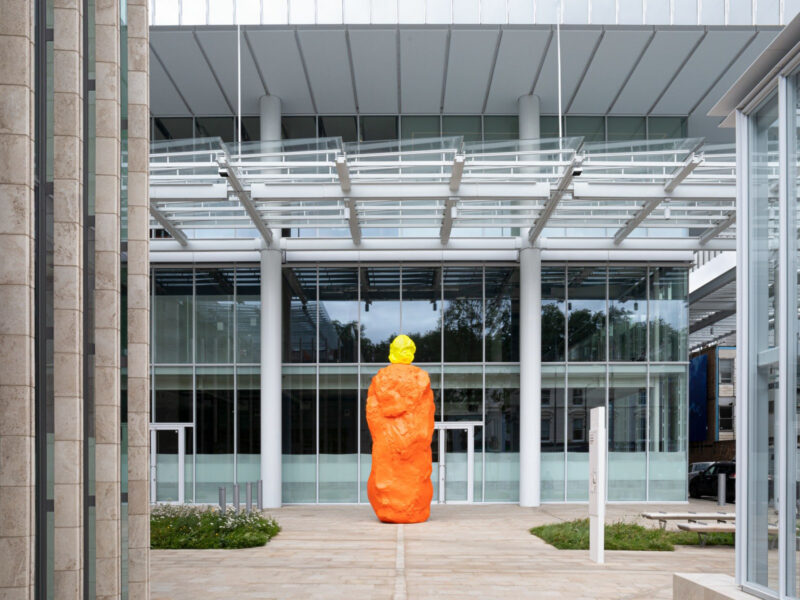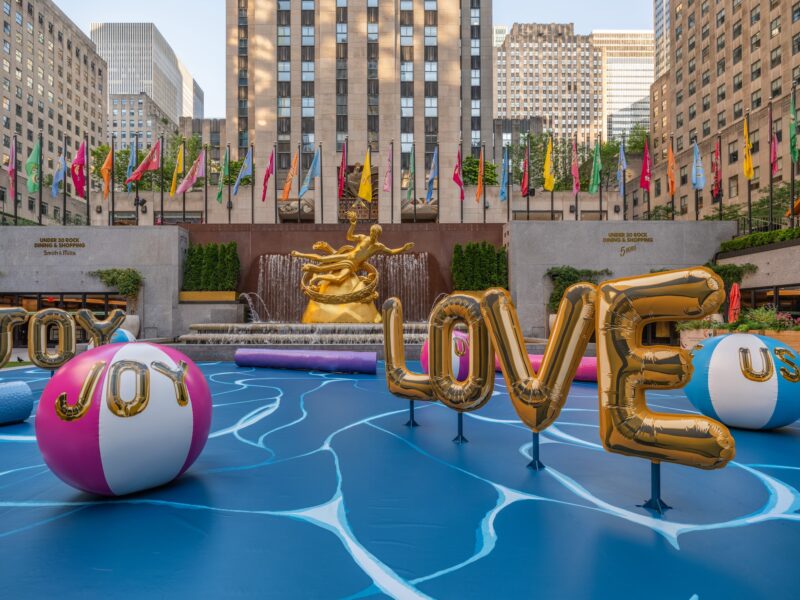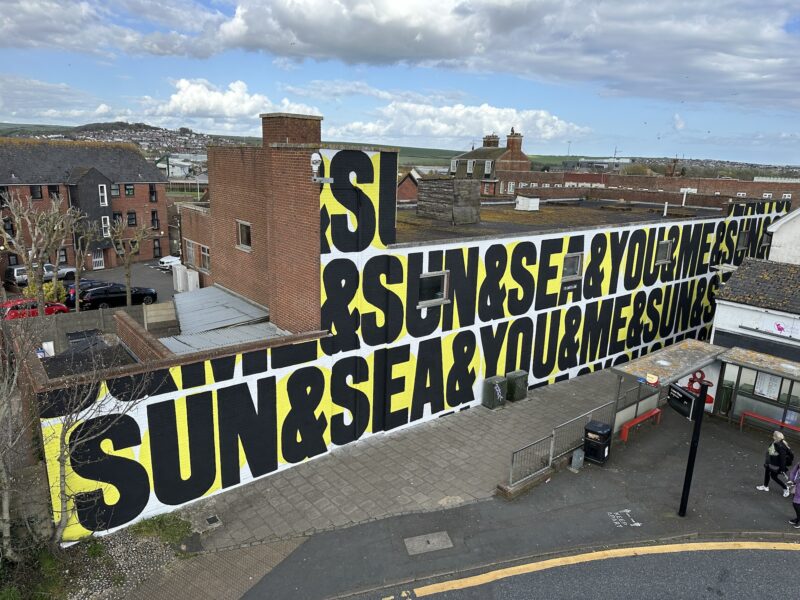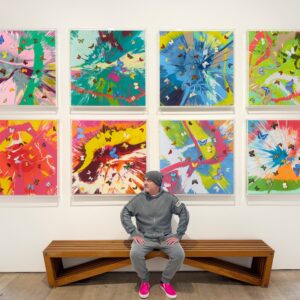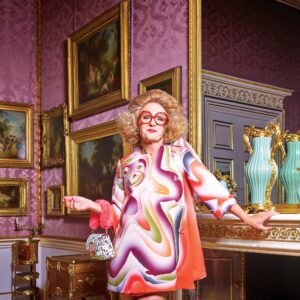A public art installation by British-Trinidadian artist Zak Ové has been unveiled in Notting Hill. Eight colourful mosaic panels resembling a carnival procession dance across the façade of the recently opened Ruby Zoe Hotel & Bar. Best known for his sculpture, film and photography work, Ové collaborated with mosaic artist Oliver Budd to translate photo montages and collages into a composition of monumental vertical scenes.

Both men are second-generation artists who follow in their respective fathers’ footsteps and whose practice is deeply rooted in tradition. Zak Ové’s father, the leading Black filmmaker Horace Ové, was one of the founders of the Notting Hill Carnival and whose seminal movie ‘Pressure’ was filmed in the area, making this artwork as much a celebration of the culture and traditions his father’s generation brought to this country as of his personal heritage and connection to Notting Hill.
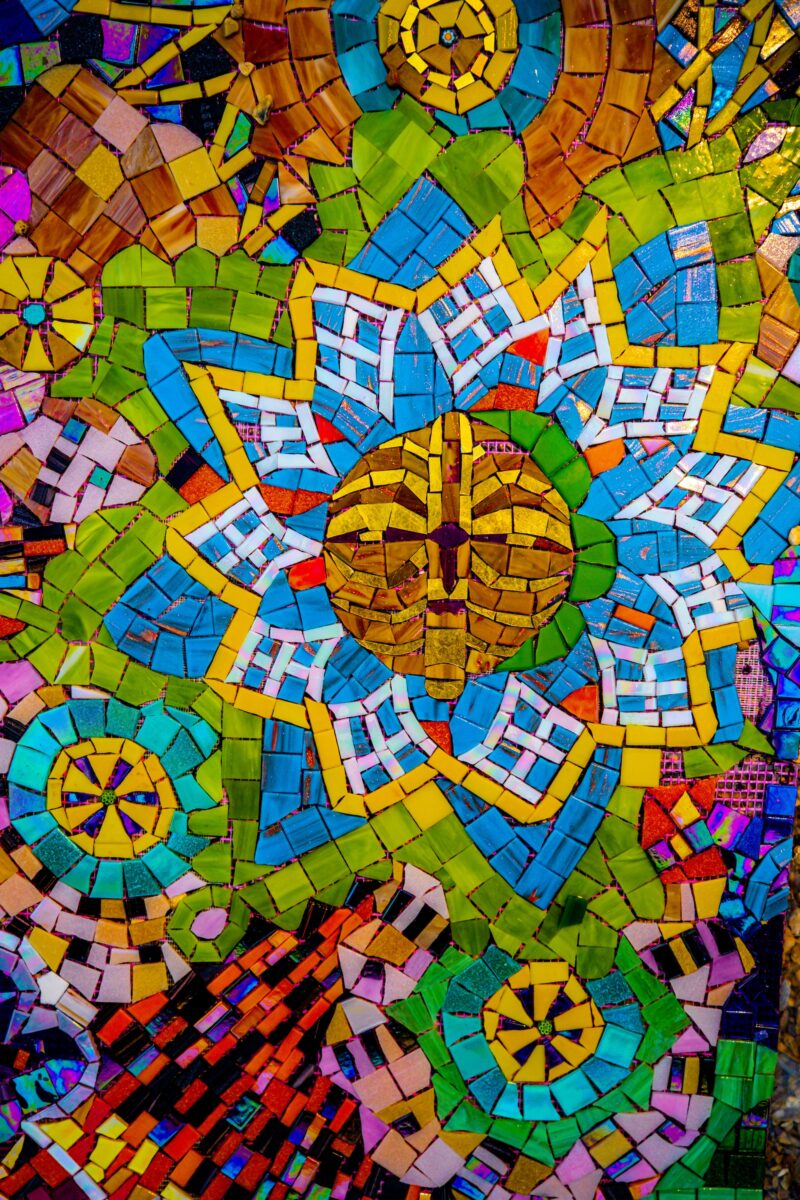
With Jumbie Jubilation Zak Ové draws on ancestral African folklore and a classic medium. Ancient Greek, Roman and Islamic mosaics often depict scenes of mythology and religious rituals while Carnival culture has not been expressed in mosaics before. Oliver Budd expertly merges traditional skills with contemporary materials sourced from as far afield as Italy and China to create an explosion of colour. The vibrant glass mosaic adds a sense of fun and celebration to the fairly drab thoroughfare of Notting Hill Gate, the iridescent and metallic shards changing with the light moving across the façade.
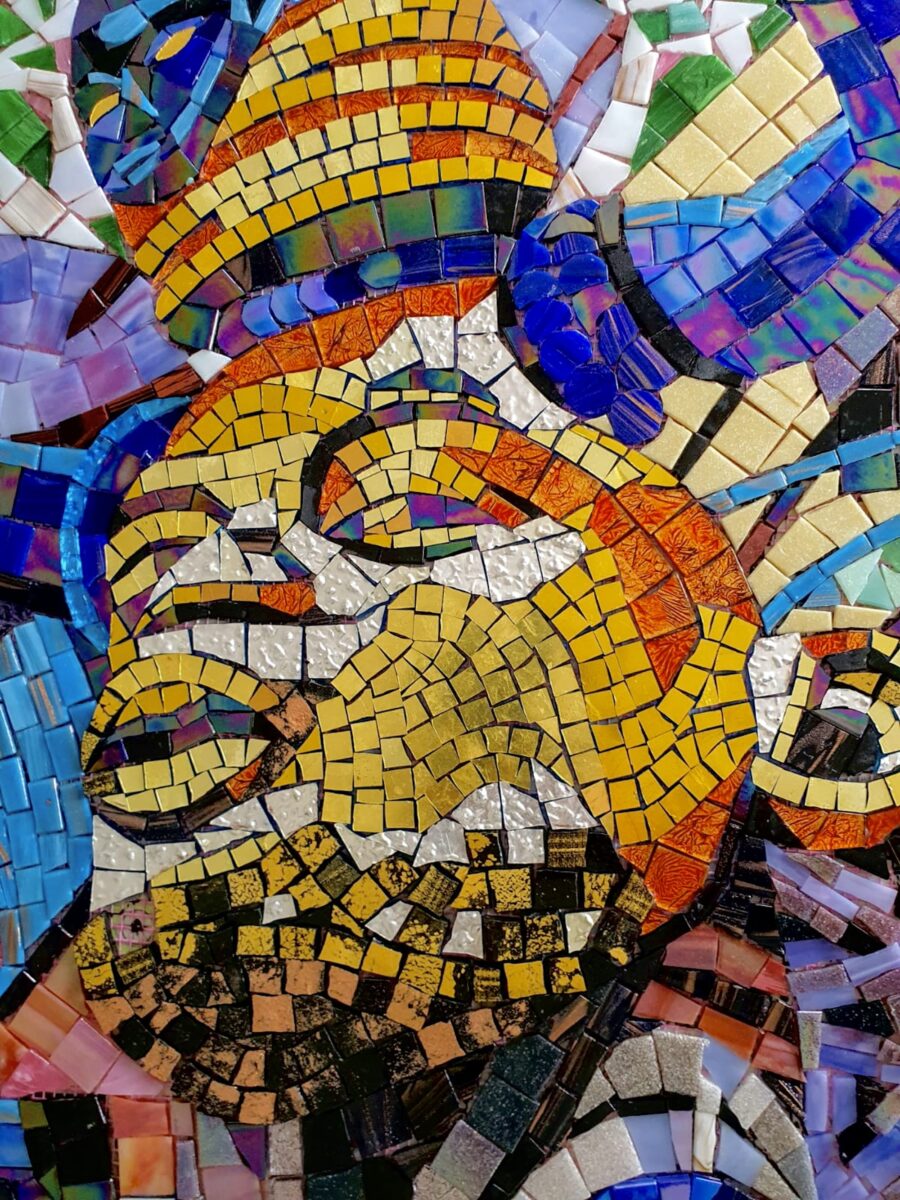
The installation features a pair of traditional Trinidadian ‘mas’ characters surrounded by colourful doilies in reference to traditional masquerade costumes. Both are recurring themes in Zak Ové’s practice whose Moko Jumbies have been included in the permanent collections of the British Museum since 2016 and more recently the Art Gallery of Ontario. The mythological figures on stilts were said to have waded across the Atlantic from Africa to protect the people of the Caribbean.
As an area known and loved for its multicultural heritage, Notting Hill provides the perfect setting for this cultural hybrid. Ruby Zoe occupies the site of Damien Hirst’s (in)famous ‘Pharmacy’ that informed the neighbourhood’s public image in the late 90s, a gentrified perception further enhanced by ‘Notting Hill’, a film that returns to some of the locations previously captured by ‘Pressure’. I look forward to one of the local cinemas programming a double bill!
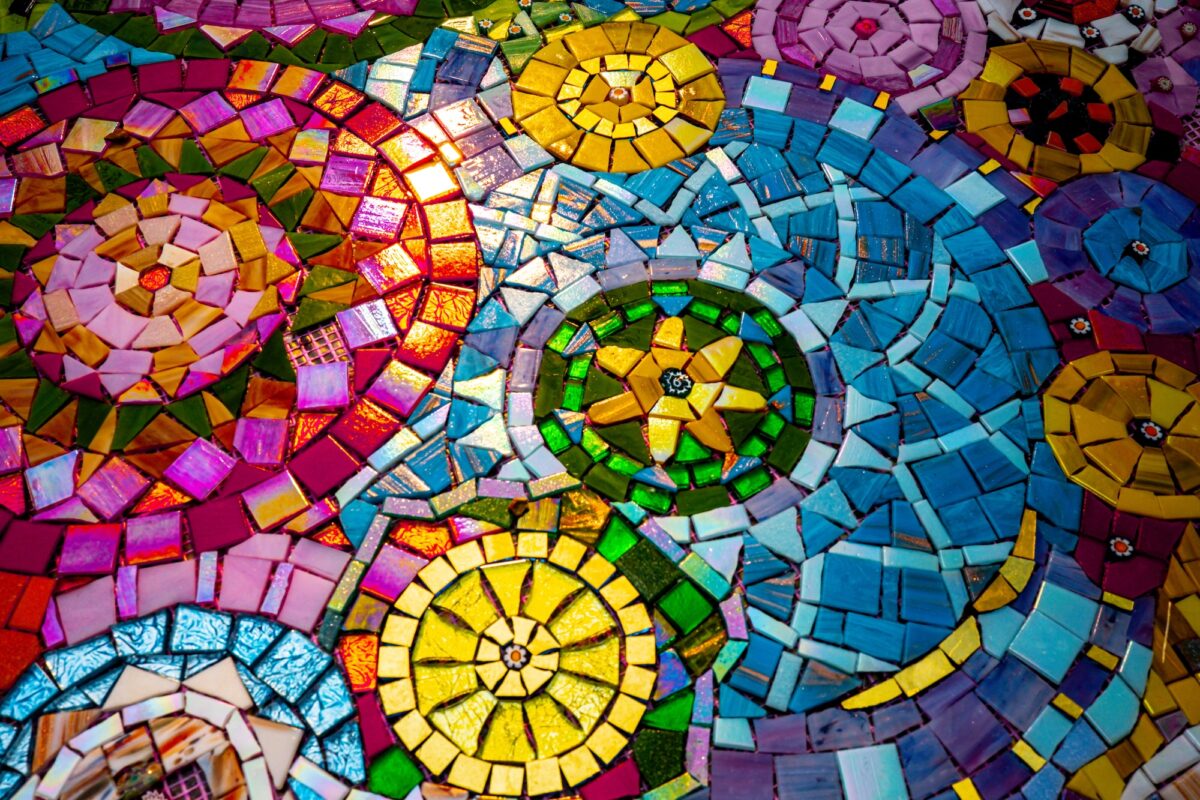
The Carnival story and Caribbean colonial history are closely interlinked with Carnival in Trinidad initially an elite event brought to the island by French colonisers in the 1700s. A fear of singing and masking as potentially dangerous led to drumming being outlawed. After full emancipation in 1838, Africans took over the streets at carnival time, using song, dance and masquerade to re-dress the still existing social inequalities. Steel bands then developed in the 1930s when the US army used Trinidad as a base for refuelling, leaving behind the empty oil drums.
Steel pan competitions were introduced to Britain by the Windrush immigrants and remain an integral part of Notting Hill Carnival, with history in danger of repeating itself as demographic shifts, fuelled by ever increasing property prices, threaten the annual street festival.
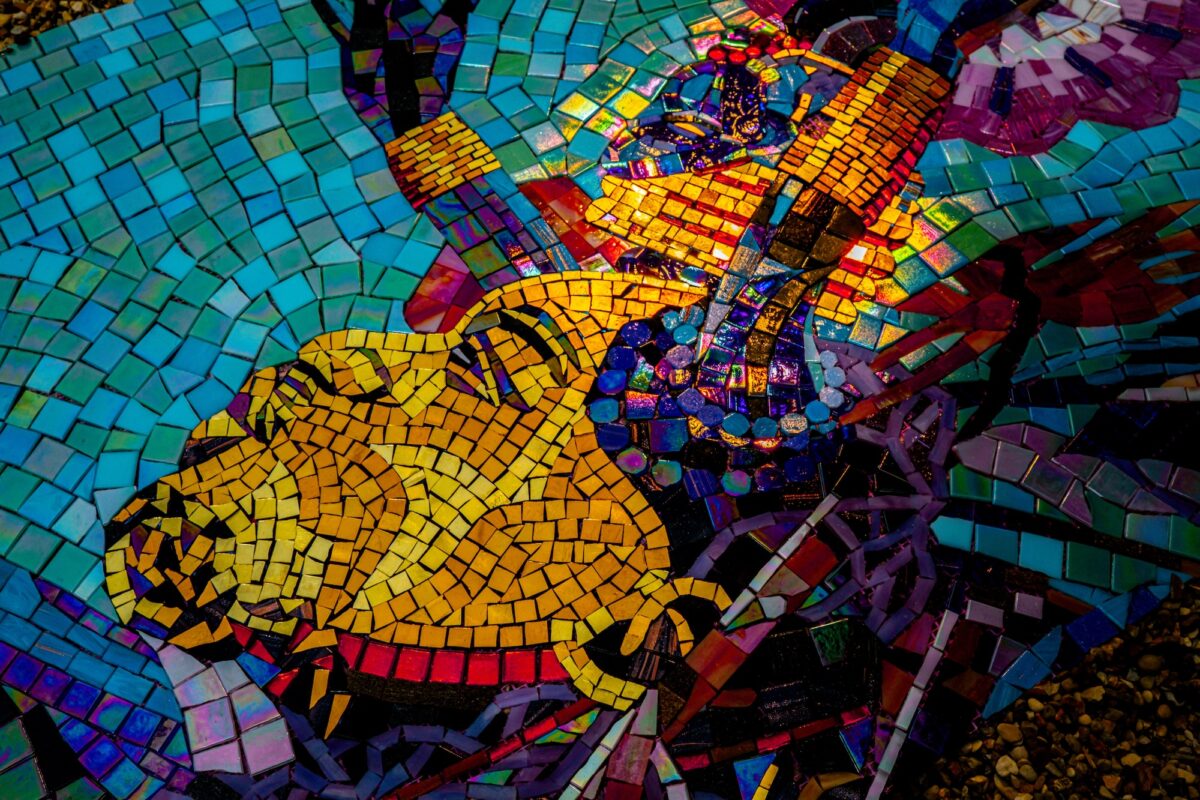
Evoking a tangible sense of permanence and freedom, Jumbie Jubilation carries a view of the past into the future.
Ruby Zoe Hotel & Bar, 146 – 164 Notting Hill Gate, London W11 3QG
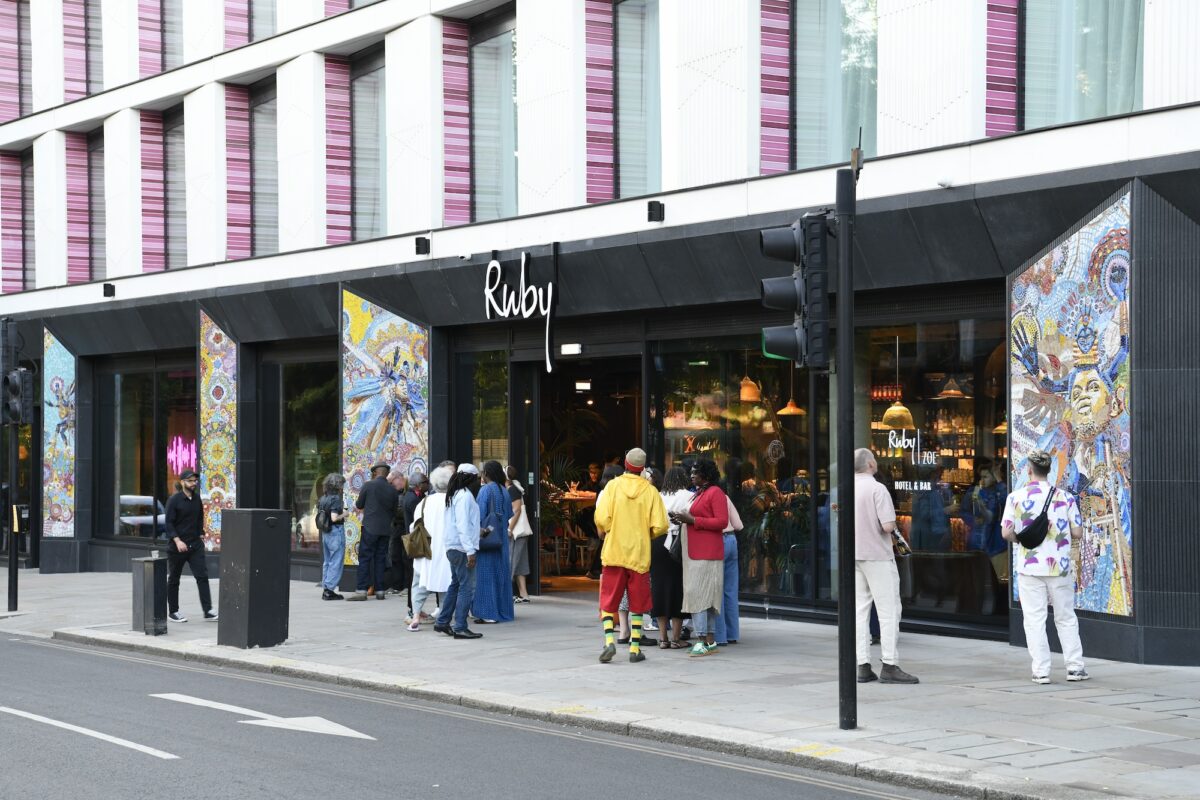
The installation was launched as part of the Kensington + Chelsea Art Week, an annual festival celebrating the rich cultural heritage of the diverse West London borough.
